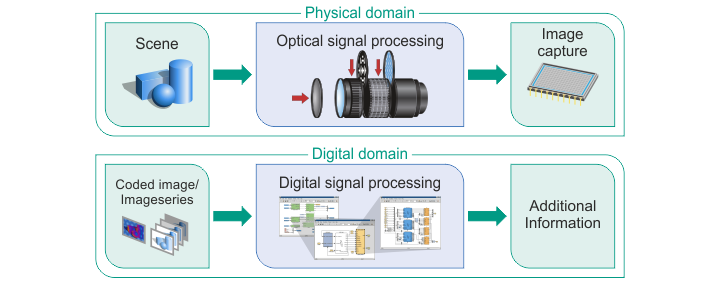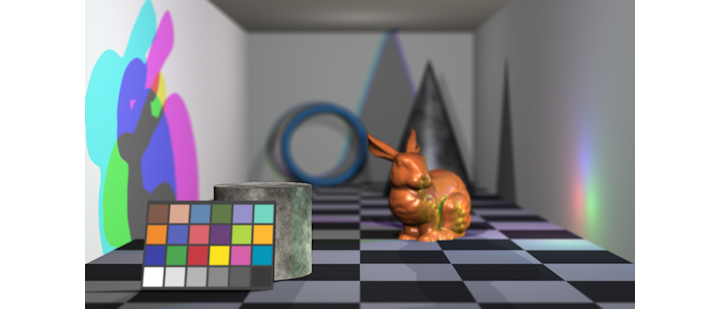Propagating light contains a multitude of useful information. In image processing, this visual information is captured with cameras. Their structure and functional principle are similar to the human eye. Unfortunately, a great portion of the visual information is lost during the capturing process of an image.
Computational Imaging describes novel methods of image capturing, aiming to conserve a bigger portion of the implied visual information for users or following image processing tasks. Methods of Computational Imaging manipulate incoming light using optical component before the actual capturing process to receive a coded image, which contains the desired information. The physical signal processing and signal digitalization is followed by a digital signal processing stage to extract the desired information from the coded image.

The goal of the research project is to develop novel concepts to capture visual information and to investigate their performance by simulation and with camera prototypes.
For this purpose, a Raytracing simulation environment for Computational Cameras has been designed at the IIIT. This simulation tool allows the physically accurate simulation of camera optics and the imaging process. This enables implementing, testing and optimizing new conceptual cameras of Computational Imaging in a convenient fashion.

Model: Stanford University Computer Graphics Laboratory.
